CX is now a top priority—and companies' #1 challenge—as it clearly correlates with brand loyalty
If there was any doubt, CX has risen to the top of consumers’ priority lists in today’s marketplace – and has also become the most elusive strategic goal of brands and businesses. New research from experience orchestration firm Genesis Confirms that the No. 1 challenge for organizations around the world is keeping up with rising consumer expectations as they struggle to deliver relationship-building experiences.
Bad customer experiences are putting brand loyalty at risk, with nearly one-third (31 percent) of consumers choosing to take their business elsewhere after an unsatisfactory interaction last year, the firm found in its survey research and its global benchmarking study. Found in the report in the third edition of. , state of the customer experience, The comprehensive report examines how consumer preferences for personalized, empathetic experiences, increasingly digital channel usage and declining satisfaction with automated interactions create increasing pressure for companies around the world.
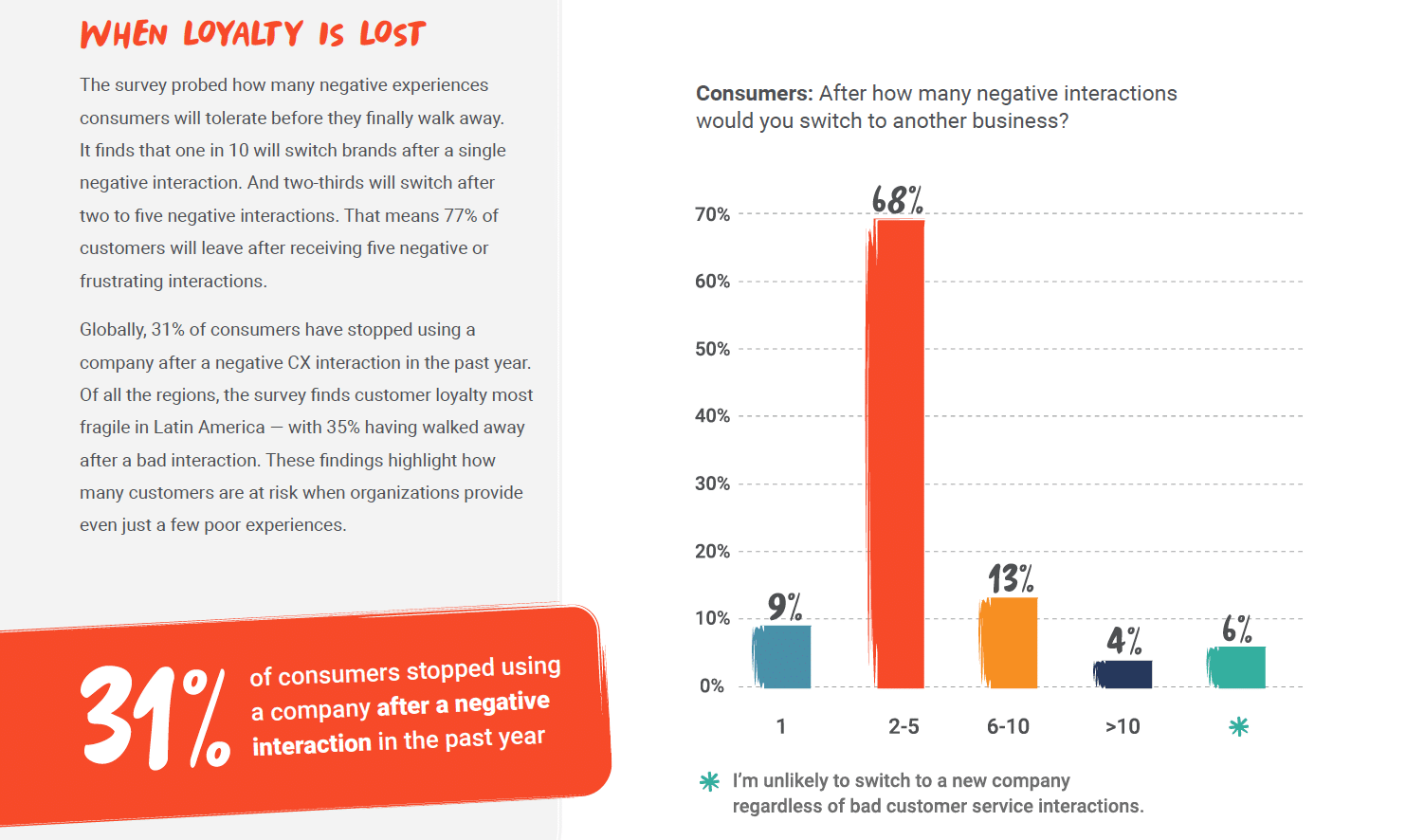
Bad experiences erode customer loyalty
The expectations for creating a great customer experience are rising faster than most organizations can handle — and they’re not afraid to walk away when consumers don’t meet their needs. The report reveals the following findings:
- Most consumers (86 percent) believe a company is only as good as its service – a staggering 16 percent increase from 2021. But only 13 percent of businesses have the tools and technology that people want to experience today.
- Just under half (43 percent) of consumers have felt highly valued after a call, while a quarter of consumers have lost their temper; For some (12 per cent), the experiences were so bad they brought tears to their eyes.
- These bad experiences are worse than disappointment—they’re loyalty killers: 77 percent of consumers will switch brands after five or fewer negative interactions with a brand’s customer service.
“Consumers have little tolerance for the fragmented, inefficient and transactional interactions they are exposed to except for the competition,” said Barbara Holzfeldchief marketing officer at Genesis, in a news release. “The most innovative organizations are proactively addressing these rapidly changing expectations by redefining what is possible using digital technologies and artificial intelligence (AI). For organizations, this study underscores the importance of strengthening customer and employee relationships by orchestrating personalized, empathetic experiences at scale.
Companies can earn loyalty by understanding customer generational dynamics and personalization preferences
To meet the rising expectations of consumers, it is imperative for organizations to understand the preferences and motivations that drive their behavior.
Generations driven by experience and values
The loyalty of Gen Z and Millennials is won and lost in experience. These generations are more likely to stop doing business with a company after a bad customer experience: 34 percent of Gen Z consumers switched brands in the past year, compared to only 25 percent of Baby Boomers. But those younger consumers are even quicker to become brand ambassadors for companies that provide excellent customer service: 43 percent — an increase of 13 percentage points from 2021 — would recommend their network, compared to less than 33 percent of baby boomers.
Marketing deals are less important to consumers (16 percent) than getting a personalized experience for services when they need them on the channel they want (62 percent). Organizations that get this right have the potential to unlock new revenue opportunities: More than 80 percent of consumers say they would buy additional items from companies that consistently personalize the customer service experience—up 10 percent from 2017 increase in marks.
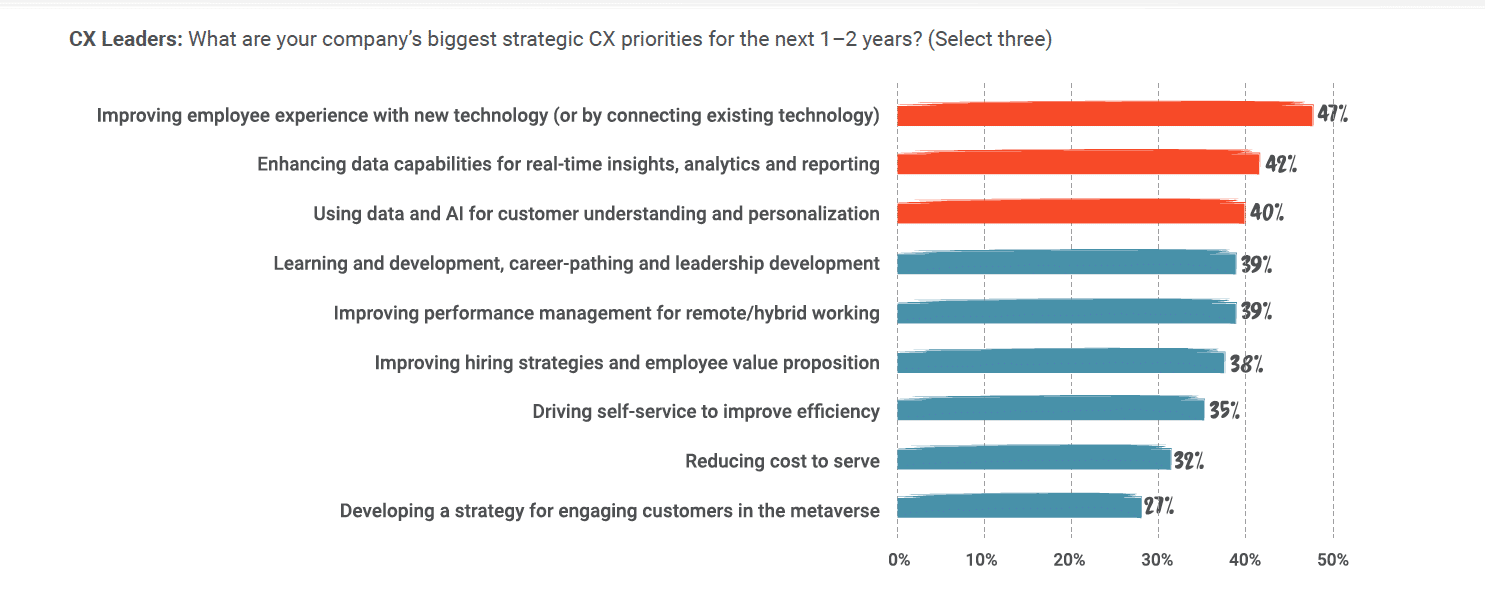
Response time and solution efficacy
More than 50 percent of those surveyed ranked rapid responses and resolving their issue during the first interaction as the most valuable elements of the customer experience.
Dropped calls and dead-end automation
In contrast, consumers reported call drops as the most frustrating thing that can happen when connecting with customer service, followed by the inability to reach a live agent from a chatbot or a dead-end from the phone menu.
CX excellence requires seamless experience and investment in employees
Across industries, many companies are rethinking their approach to customer service—with plans to increase their respective budgets by 25 percent in 2023. Key spend priorities focus on enabling end-to-end experience orchestration to improve engagement across channels, systems and departments.
Furthermore, businesses are recognizing the intrinsic connection between their customers and employees. According to nearly half of CX leaders surveyed (47 percent), the #1 CX priority is investing in technology or connecting systems that improve the employee experience. Key focus areas over the next one to two years include simplifying the employee user experience and helping customers better meet customer needs with advanced knowledge management capabilities.
As organizations invest, consumer preferences and attitudes should play a key role in determining which technologies and tools to use:
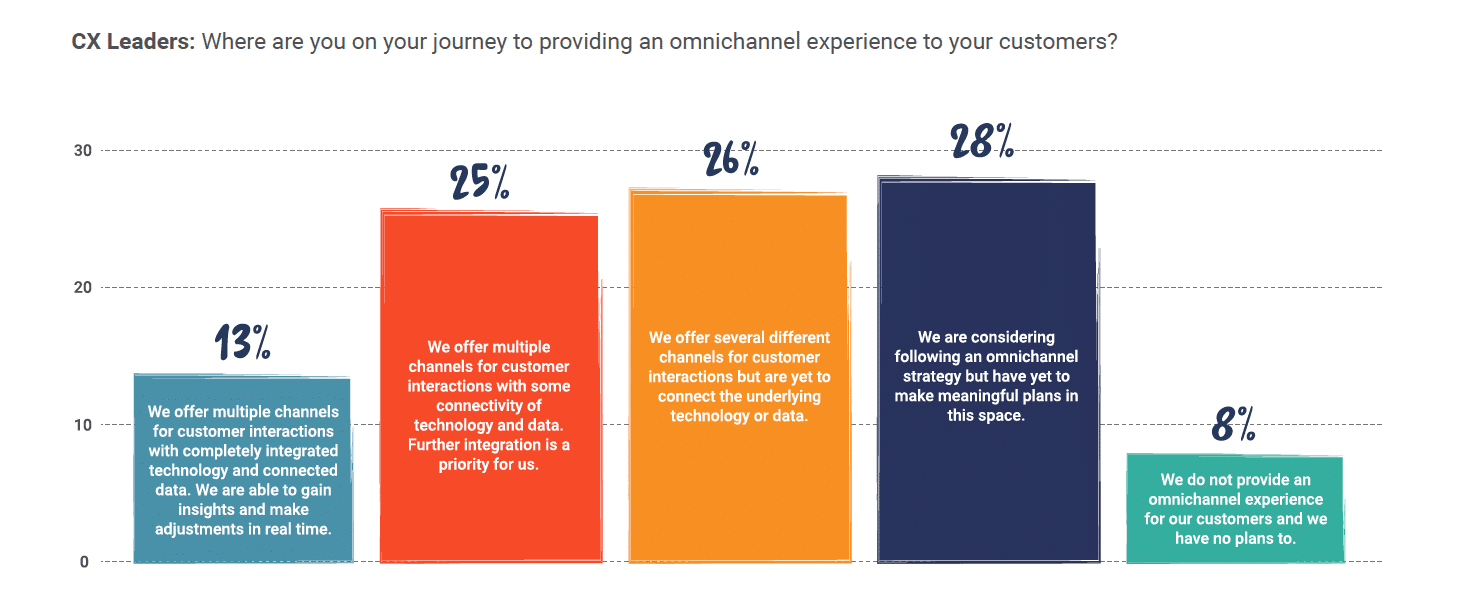
Better chatbots and employee interactions start with knowledge
While the use of chatbots for customer service is on the rise, consumer frustration is also on the rise. Only 21 percent of consumers were highly satisfied with chatbots, citing not being able to reach a live agent from the chatbot and having the agent repeat the conversation they had with the bot as their top frustrations. For organizations to take advantage of the potential of bots, they will need to focus on creating a more seamless flow of the right information across channels and interactions, making it easier and faster for customers to meet their goals.
Connected customer experiences matter
According to CX leaders, the biggest challenge to delivering a seamless experience is the lack of moving customer context from one channel to another (44 percent). To solve this, most organizations believe they need stronger capabilities to coordinate every consumer touchpoint: the top two strategic priorities for organizations are implementing a unified CX platform (71 percent) and creating ubiquitous experiences (50 percent). per cent) involves connecting technology and data.
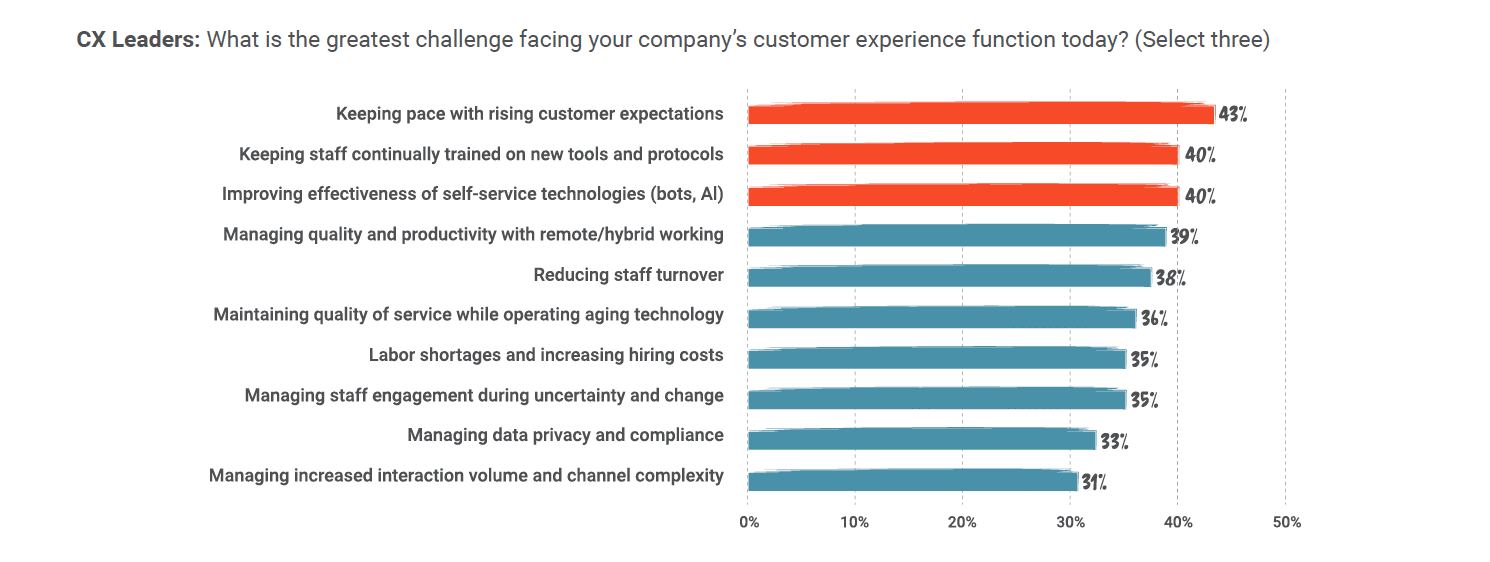
voice is no longer the leading channel
With digital channel use accelerating, email has overtaken voice as the most common way to reach customer service for the first time (72 percent using email versus 68 percent using voice). However, given consumer preferences for this channel’s generally slow response times and speeds, it is not their most preferred channel. When given a choice, consumers still prefer a call, with voice conversations being the primary choice for communication overall. However, as the preference for this channel drops quickly based on customer age (52 percent of Baby Boomers prefer voice. Just 19 percent of Gen Z), organizations need to evolve their customer engagement models for this digital generation. Is required.
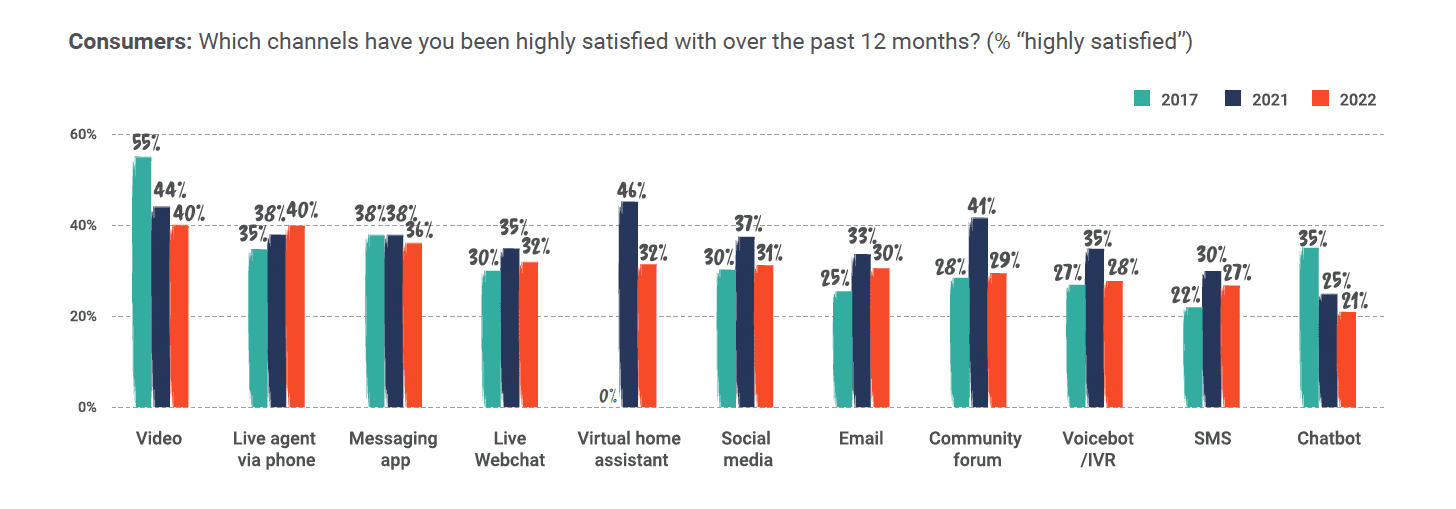
Integrated CX is an industry-agnostic priority
The report also reveals key industry challenges and plans, including:
- financial Services The financial services industry is lagging behind when it comes to omnichannel strategy. Only 26 percent offer multiple channels for interaction with customers and have integrated technologies and connected data. Additionally, nearly half (46 percent) either do not have a plan or have yet to make one. Meaningful plans in this space. However, nearly 60 percent cite implementing a customer experience platform that integrates systems as a priority initiative.
- public area The public sector sees the most potential in cloud infrastructure, rating its benefits overall higher than any other industry. The top three benefits included: better access to data across channels (57 percent); the ability to add new capabilities, features and channels more quickly (56 percent); and enabling remote or hybrid working (52 percent). More than two-thirds (69 percent) indicate implementing a customer experience platform that integrates with systems as a top priority
- Health care To support their strategic priorities, more than two-thirds (69 percent) of healthcare organizations plan to implement a CX platform that integrates systems within the next one to two years. This effort will be aided by a planned average increase of 24 percent in their customer service budget through 2023.
- retail Retailers are furthest along in their omnichannel strategy, with more than half (52 percent) offering multiple channels for interacting with customers. Despite being technologically ahead of other industries, retailers reported a two percentage point drop in customer satisfaction over two years and projected the highest annual employee turnover rate of 40 percent. Retailers recognize the opportunity to deliver stronger personalization and engagement, with 76 percent planning to implement a single experience platform that integrates systems within the next one to two years to support their strategic priorities.
The report reinforces that for organizations to be successful today, they must adopt a people-centric, integrated approach to customer and employee experiences. Organizations that leverage digital and AI technology to deliver the power of personalization and empathy in every experience will stay ahead of competitors by building loyalty while managing business costs.
Download an executive summary and chapter samples here,
In November 2022, Genesis worked with an independent research firm to survey 5,517 consumers and 646 CX decision makers (“CX Leaders”) in 18 countries around the world. Among business respondents, the banking, government, healthcare, insurance, manufacturing, professional services, retail, technology and telecommunications industries were represented.




